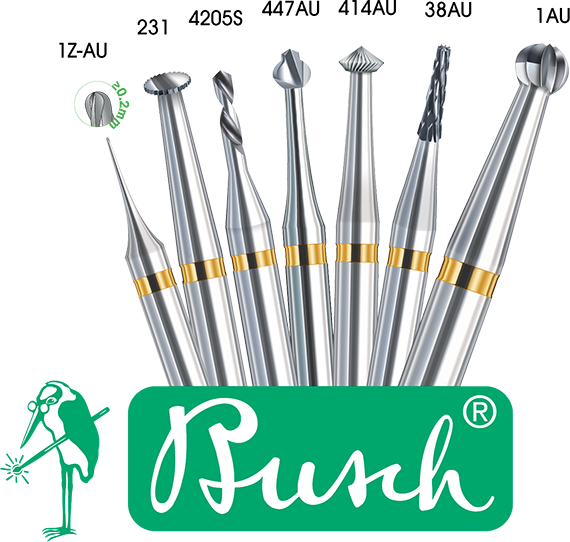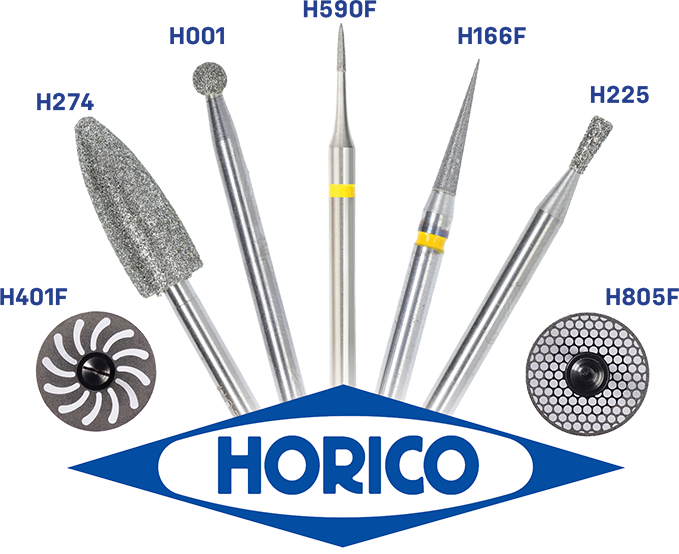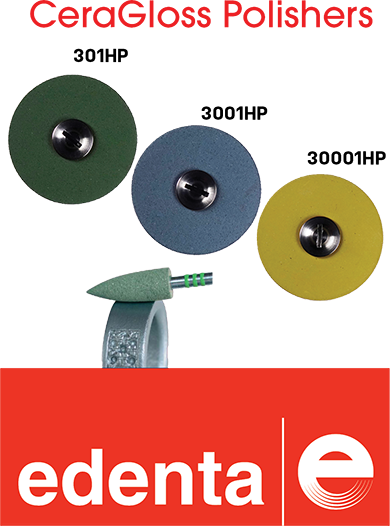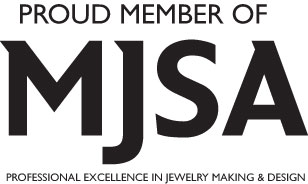Busch Abrasives - Ordering Information and Recommendations
"Best Quality for Best Results"
Ceramically bonded rotary abrasives were used for the first time in the late La Tene period (approx. 150 - 0 BC), a development which was probably triggered by the use of potters' wheels.
Around 1500 AD, Leonardo Da Vinci produced designs for grinding machines.
As the result of the widespread use of dental engines, Busch has been supplying abrasives for dental purposes since the start of the 20th century.
Silicon carbide (SiC) and high grade corundum are primarily used today as a basic material for abrasives. These materials, provided in different grits, are bonded with ceramic materials, magnesite, or synthetic resin in different hardnesses; the type and hardness of the bond determines the wear behavior. Optimum combination in conjunction with highly-precise manufacture results in the right product for different applications.
The Busch product range is tailored to meet certain requirements: silicon carbide and high grade corundum abrasives, including the new ALOX abrasives with ceramic bond, HITZLOS ("heatless") and SILENT abrasive wheels with magnesite bond.
Busch abrasives make processing of numerous materials extremely economical.
Specify color, type, and number when ordering. All items available in straight Handpiece only, unless otherwise indicated.
Material: Only high quality raw material specially selected is used. Shanks are made of nickel plated tool steel or stainless steel.
Labeling
Material and shank designation, shape, and size, complete ISO number, maximum admissible speed, our manufacturing numberTechnical Data
Abrasive
Silicon carbide (SiC)High-grade corundum (AI2O3)
Grit Size
x-fine, fine, mediumBonding
Ceramic, magnesite, resinBonding Hardness
soft, medium, hardMaterial of shanks
Stainless steelShaping
Pressing, grindingOverall length
HP. . . . . . . . . 44.3 - 51.0 mm
RA. . . . . . . . . 22.7 - 29.5 mm
FG. . . . . . . . . 21.0 - 25.0 mm
Shank diameter
HP. . . . . . 2.35 . . . -0.016 mm
RA. . . . . . 2.35 . . . -0.016 mm
FG. . . . . . 1.60 . . . -0.016 mm
True Running
better than standards imposedStandards
DIN, ISOMaximum admissible speed
mentioned on each packageBUSCH high-grade corundum abrasives (AI2O3), pink
Ceramic bond (ISO 625)Grit size medium, Bonding hardness medium (ISO 523)
For medium hard metal alloys
BUSCH silicon carbide abrasives, green
Ceramic bondGrit size medium, Bonding hardness medium
For ceramic, acrylic, metal alloys
BUSCH high-grade corundum abrasives (AI2O3), white
Ceramic bond (ISO 635)Grit size medium, Bonding hardness medium (ISO 524)
For soft metal alloys
Low to medium speeds
BUSCH ALOX-abrasives (AI2O3), blue
Ceramic bond (ISO 635)Shank: HP, Ø 2,35 mm (ISO 104)
Grit size medium, Bonding hardness medium (ISO 523)
For semi-precious and non-precious metals
BUSCH HITZLOS silicon carbide abrasive wheels
Magnesite bond (ISO 654)Unmounted, Ø of centre hole 1.8 mm (ISO 900)
Thickness 2.0/3.0/4.5 mm
Grit size medium, Bonding hardness soft (ISO 522)
For heatless and dry grinding of ceramics and metal alloys.
BUSCH high-grade corundum abrasives (AI2O3), brown
Ceramic bond (ISO 615)Grit size medium, Bonding hardness soft (ISO 522)
For hard metal alloys like chrome-cobalt
ABRASIVE STONES CANNOT BE STERILIZED






